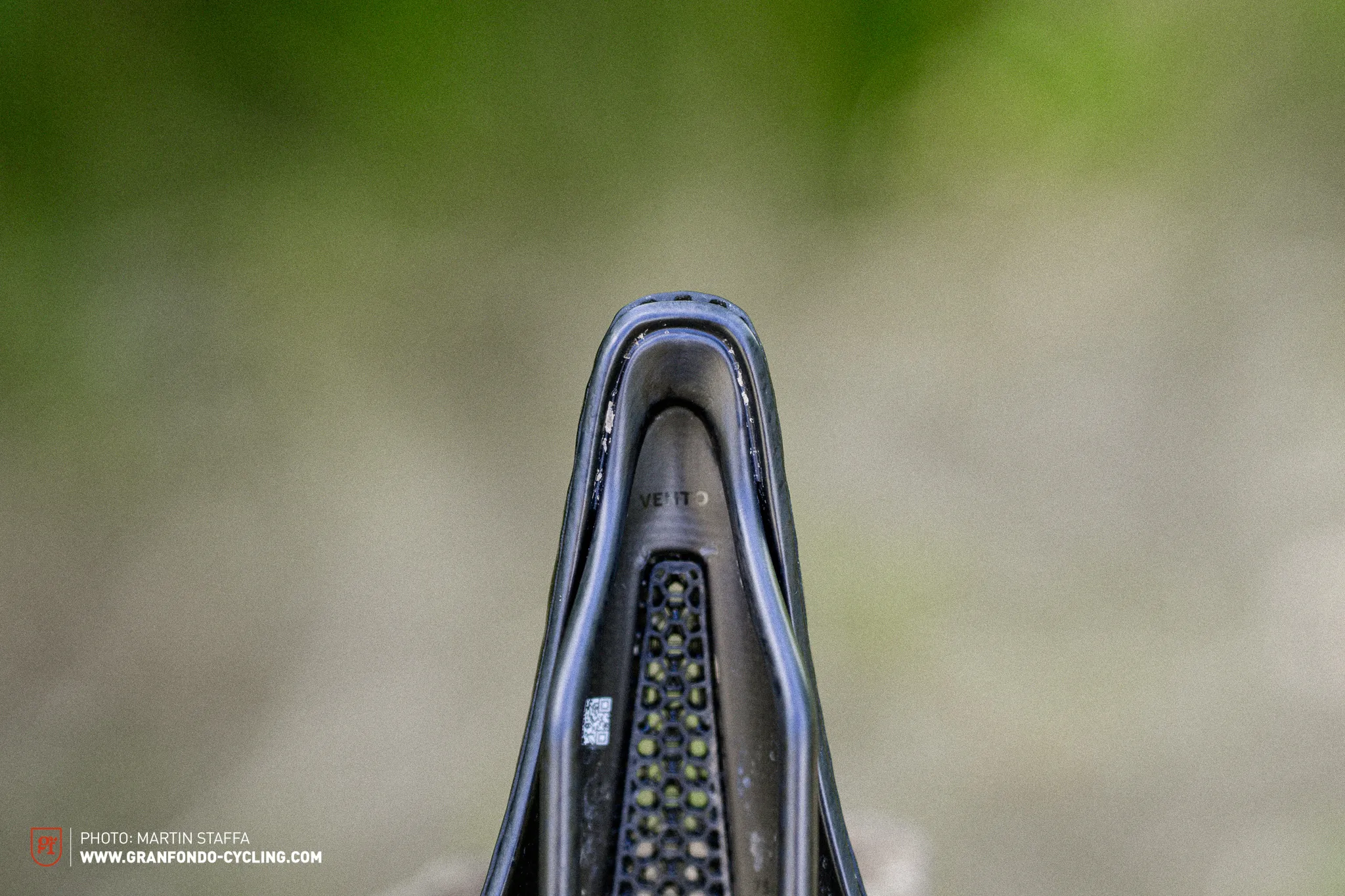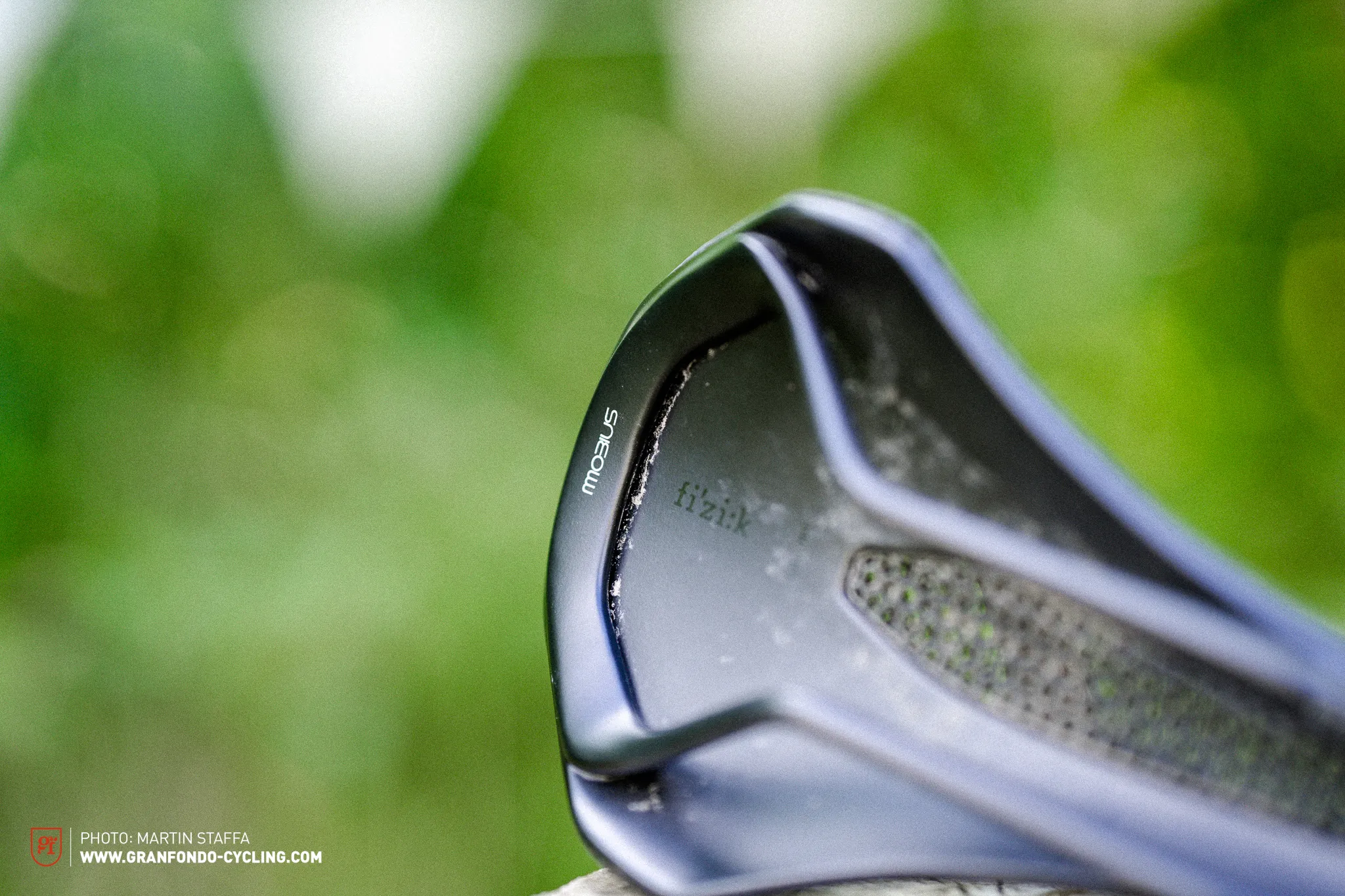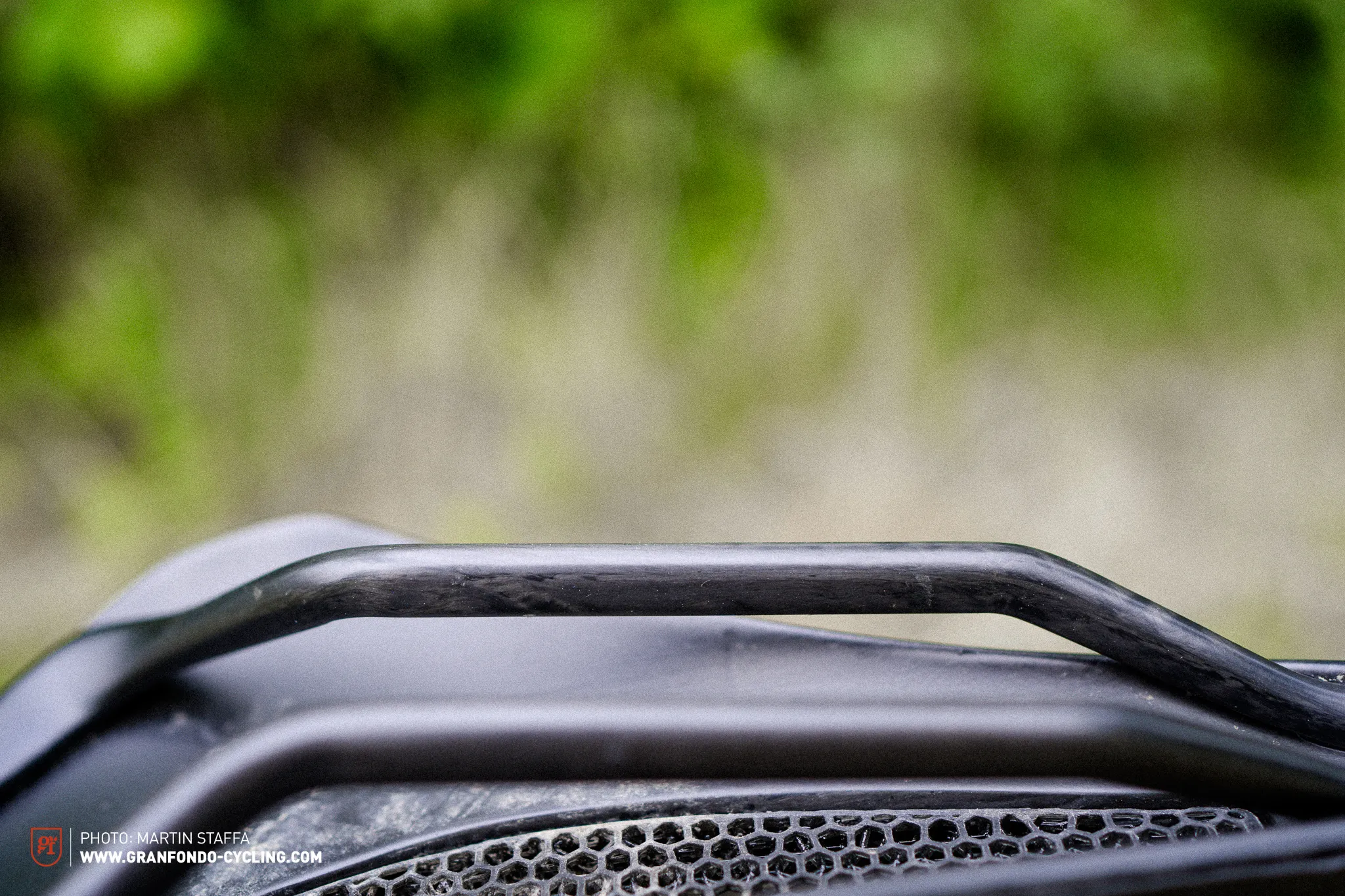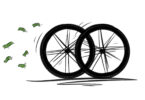THE LAB: Fizik Vento Argo Adaptive – 3D Printed saddle
The Fizik Vento Argo Adaptive saddle looks like something from the future. Through the use of 3D printing technology, the saddle has a honeycomb structure that offers different levels of padding depending on the seating area. Is it just visually appealing, or does it also offer comfort for your buttocks?

Today, almost anything can be produced by a 3D printer: houses, boats, musical instruments. The bicycle industry has also embraced this manufacturing process, allowing for the creation of everything from small covers and parts to complete frames. Fizik have joined in by using 3D printing to produce the Vento Argo Adaptive saddle. Specifically, they use the Carbon Digital Light Synthesis process, which is also employed by other manufacturers for similar products, such as Adidas with their 4D shoes. We’ve spent many kilometres seated on this saddle, but did we stay comfortable?
Print it like you mean it! What sets the Fizik Vento Argo Adaptive saddle apart?
In short, there are a few key differences, but not everything has changed. The overall shape of the saddle, including the short nose, remains very similar to the original Fizik Vento Argo. The “Adaptive” in the name refers to the material’s ability to adapt to pressure. There are three different models of the Fizik Vento Argo Adaptive: R3, R1, and 00, each available in two widths. The models differ in terms of rail and frame material, weight, and price.

The short saddle nose may not be that short in direct comparison, but it is still well-suited for sporty riding positions.
The top-tier model, the Fizik Vento Argo Adaptive 00, features a full carbon shell and rails. The saddles weigh between 184 and 224 g, with prices ranging from € 259 to € 399.
The unique aspect of the saddle lies in its 3D printed seat area, which is attached to the saddle frame. The printing process allows for the design of different zones with varying levels of flexibility. As a result, the damping properties and firmness of the saddle vary depending on the specific area. For example, the centre section is notably softer and thinner compared to the rear section. The distinct levels of firmness and structure are clearly noticeable.

Multiple honeycomb layers stacked on top of each other create a relatively tall structure, but also provide a significant amount of flexibility.
Are you sitting comfortably? The Fizik Vento Argo Adaptive saddle in the test
The Fizik Vento Argo Adaptive saddle creates a visual impact with its futuristic appearance and honeycomb structure. While the seat pad has softer and firmer areas distributed throughout, the overall feel of the saddle is noticeably softer compared to other road and MTB saddles. In comparison to a carbon saddle, it gives the sensation of sitting on a small mattress. The honeycomb layers create a relatively tall structure, making it necessary to adjust the seatpost height.

The honeycomb structure in the middle is so thin that the saddle is at its softest in this area.
When installing the Fizik Vento Argo Adaptive saddle with carbon saddle rails, it is important to consider the use of a compatible seat post designed for oval carbon saddle rails. Additionally, the damping effect provided by the layered liquid resins also impacts the weight of the saddle. The top model weighs 185 g, which is notably heavier than comparable high-end saddles.

On the top model Fizik Vento Argo Adaptive 00, the saddle shell is also made entirely of carbon.
Once seated, the padding becomes immediately apparent. The structures yield when you sit down, creating a sensation akin to sitting on a thin cushion. This provides a pleasant and exceptionally comfy seating experience. When riding, you quickly become used to the flexibility of the Fizik Vento Argo Adaptive. The saddle’s structure proactively absorbs hard impacts, expanding its field of application from road cycling to gravel and mountain biking. The saddle provided excellent support during long rides spanning 100 to 200 kilometres. Even multi-day bikepacking trips with a saddlebag carrying a load of approximately 3 kg were handled by the saddle without any complaints, squeaking, or breaking.

To mount the R1 and 00 models with carbon rails, a compatible seat post designed for oval carbon saddle rails is required.
Saddle with a difference: The Fizik Vento Argo Adaptive stands out with its honeycomb structure on the top, made possible by 3D printing. This innovative manufacturing process allows for a significantly softer surface, offering a wide range of flexibility and varying degrees of firmness throughout the saddle. Ultimately, this translates into exceptional comfort and a subtly distinct seating sensation. Another notable advantage is the saddle’s versatility, as it performs well across different cycling categories. But, after all, finding the right saddle remains a highly individual choice.
Tops
- provides a lot of comfort, especially when riding on rough terrain
- suitable for different uses and bikes
- futuristic and eye-catching look
Flops
- not lightweight
Tester: Martin & Calvin
Test duration: 5 months
Price: € 399.00 (Fizik Vento Argo 00 Adaptive); € 299.00 (Fizik Vento Argo R1 Adaptive)
Weight: 185/194 g (at a width of 140 mm)
Manufacturer’s website: fizik.com
Intended use: Road, Gravel, Mountain Bike
Did you enjoy this article? If so, we would be stoked if you decide to support us with a monthly contribution. By becoming a supporter of GRAN FONDO, you will help secure a sustainable future for high-quality cycling journalism. Click here to learn more.
Words & Photos: Martin Staffa






